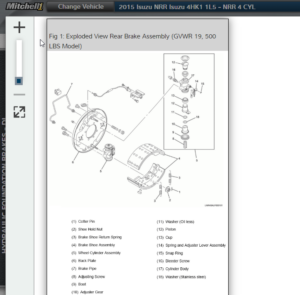When it comes to the effects of winter weather on trucks, you probably don’t give it much thought once the spring rain has passed. Yet, when it comes to heavy spring rains, “April is the cruelest month . . .” That opening line from the poet T.S. Eliot’s poem “The Waste Land” applies even now as truck repair shops may still be seeing the impact of historic spring flooding this year. The mixture of water and dirt on a truck’s brake system can take a heavy toll.
The problems associated with driving through standing or running water have the potential to wreak havoc with any brake system. However, hydraulic drum brakes offer a particular vulnerability to the muck and mud, namely the backing plate that supports the brake shoes and associated hardware. Granted, the backing plate does provide a barrier from most debris encountered during normal weather conditions, but when the water begins to rise and the wheels are submerged, junk finds its way inside the brake assembly.
There are a couple of issues that could result from driving in flood waters deep enough to submerge the brakes. First, dirt and small rocks can collect over time in the edges of the brake linings and act as an abrasive against the brake drums, resulting in uneven wear and grooving. Second, as water enters and evaporates, the potential for rust and wear increases as the lubricants for metal-on-metal wear surfaces and moving parts or the self-adjusting components washes away. When the integrity of the internal hardware is diminished, brake application, return, and adjustment may lead to uneven braking.
Granted, regular maintenance schedules will help to minimize these sorts of brake issues. Still, a full internal inspection of the wheel assemblies might not be something checked except for extended time periods. When the truck is operated in conditions that are not considered normal, additional service will be left to the shop or fleet manager. Always check your vehicle’s service manual when performing maintenance. Using a resource like TruckSeries truck repair information from Mitchell 1 can help get the truck back on the road quickly. To be sure, most maintenance schedules do not take into account the “submarine factor” of a torrential spring like we had this year.







